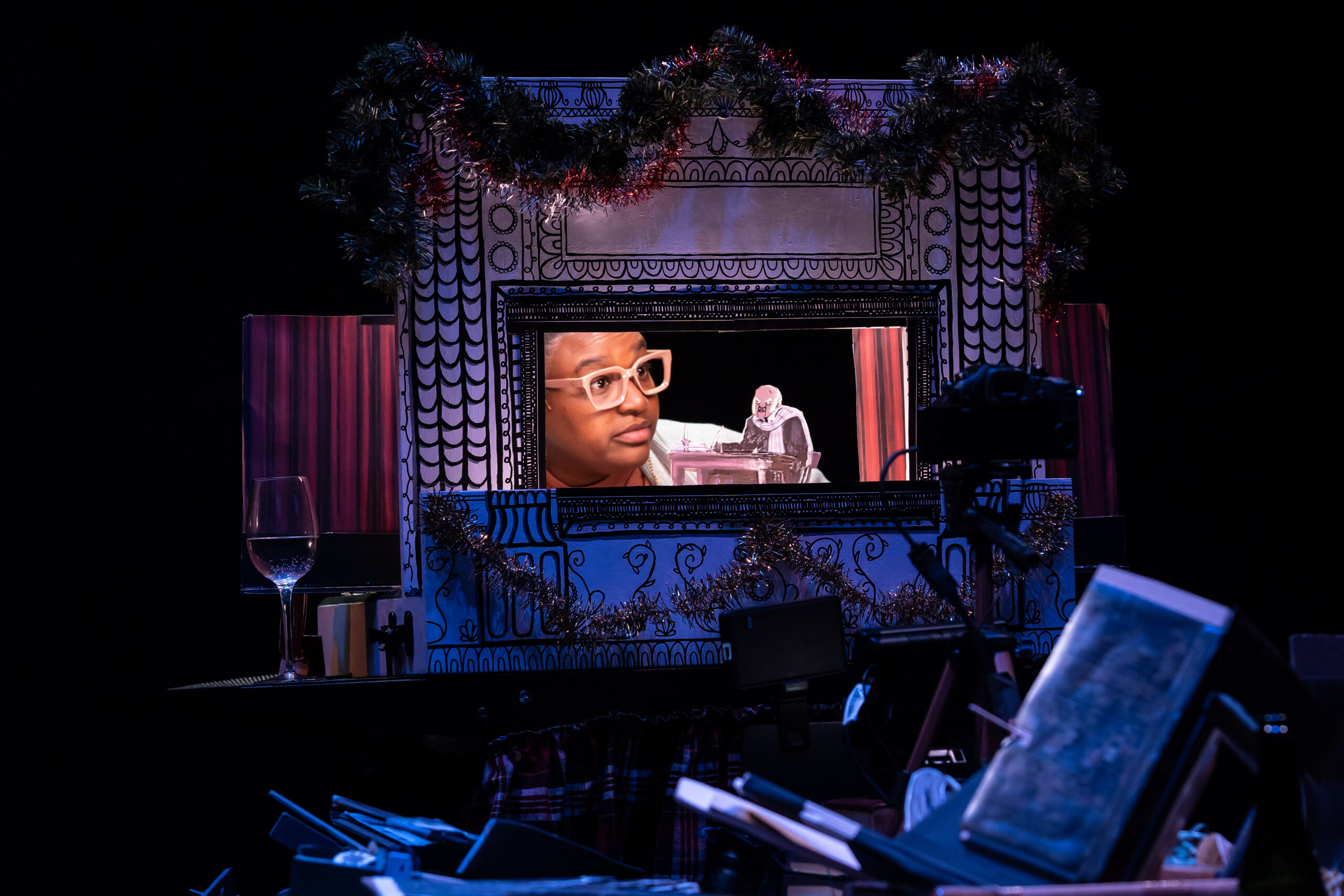Before the Chicago International Puppet Theatre Festival (est. 2015), there was Redmoon Theater (est. 1990, also co-founded by festival artistic director Blair Thomas).
A puppet-based company centered on spectacle and cross-arts collaboration, Redmoon drew a wide range of artists and performed in theaters and festivals, but most notably, on the street.
The festival grew out of that tradition, establishing the city as a puppet hub, and luring international puppet companies to Chicago every January.

The festival’s puppet design studio in the Fine Arts Building is located in the very spot that the word “puppeteer” may have been coined in 1912 by Ellen Van Volkenburg, connecting it to a much longer theatrical history.
Known as “a woman of strange and unique talents,” Van Volkenburg co-founded one of Chicago’s earliest and most influential peoples’ theater companies: The Chicago Little Theatre.
Though it ran for just five years, its impact endured as the impetus for the Little Theatre Movement of the 1910’s and 20’s. Their DIY, non-commercial approach challenged preconceptions about theater being a high art form and set the stage for later theatrical concepts (improv, for example) that would be developed in Chicago.
The theatre’s motto was “Create your own theater with the talent at hand.”
They produced works that were poetic, classical, experimental, often full of puppets. And above all, for the people. This is where Van Volkenburg founded the Chicago Little Theatre Marionettes.
Pulling on Traditions
The last century has been full of fruitful theater years for Chicago—brimming with Broadway contenders, storefront experimental works, and institutions like Chicago Shakes, Steppenwolf, and Goodman.
Thanks to pioneers of Chicago theater who maintained the DIY aesthetic, including Van Volkenburg, a climate of exchange has persisted among artists who do voice work, actors who puppeteer, dancers who perform circus, and puppeteers who build sets.
This environment has given Chicago its reputation as a proving ground for great performances and versatile artists. It has also birthed innovative cross-discipline theater companies such as the Neo-Futurists and Manual Cinema.
It’s difficult to measure how many artists and art forms have been influenced over the decades by Chicago’s theater influence.
Sarah Fornace, co-founder of Manual Cinema, says her company couldn’t have become what it was today anywhere else.

Manual Cinema has performed around the world and across artistic disciplines—from adapting poetry and performing with contemporary classical musicians at the Poetry Foundation to renting a funeral home for a puppet show premiere with friends in experimental music.
Fornace sees a direct line from the traditions of Van Volkenburg’s era to the current theater climate in Chicago, and recognizes their impact on Manual Cinema. “Blair Thomas [at Redmoon] gave me my first paying job as a puppeteer, and I still often think of basic principles of puppetry that I learned on that show.”
That marionettes operated by women in a show in a tiny theater over a 100 years ago could somehow be part of a movement whose influence persists in theater today is not simply surprising, it’s potentially inspiring to a whole new generation of puppeteers.
Ellen Van Volkenburg would be proud to see her legacy carry on.
Chicago’s Puppet Community
Chicago’s working-class ambition carried over to the arts. The creative landscape attracted performers, shows sprung up to entertain the masses, and artistic innovations (like Little Theatre and non-illusory theater) emerged.
The current puppet community in Chicago includes offshoots of these innovations, from regular puppet slams and workshops at Stop Motion Plant, Puppets in Progress, Agitator Gallery, Nasty, Brutish and Short, and PuppetQueers, to grassroots puppet-based companies like Rough House Theater, Shoestring Puppets, and Rabbit Foot Puppetry.
For the puppet-curious, there are puppet performances on any given week in Chicago. January’s highlight is the Chicago International Puppet Theatre Festival, January 15-26, with multiple venues.

